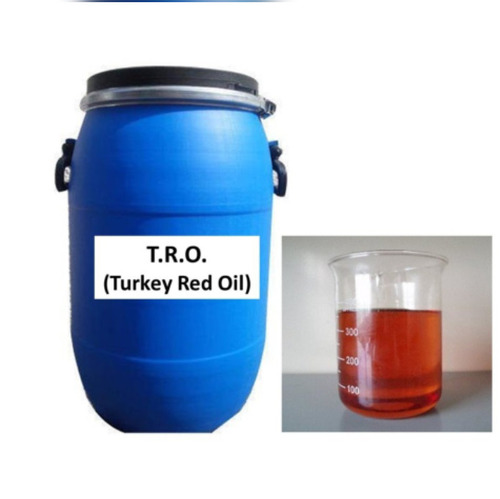Turkey Red Oil, also known as sulfated castor oil, is a fascinating and versatile substance with a rich history and a broad range of applications. This unique oil, which is water-soluble and possesses excellent emulsifying properties, has made significant contributions to industries ranging from textiles to cosmetics. In this blog, we’ll explore the origins, production process, properties, and various uses of Turkey Red Oil.
The Origins and History of Turkey Red Oil
The name “Turkey Red Oil” originates from its initial use in the Turkey red dyeing process, a method developed in the Middle East and widely adopted in Europe during the 18th and 19th centuries. This dyeing technique produced a vibrant, long-lasting red color on cotton fabrics, which was highly prized at the time. The oil was crucial in this process due to its ability to help the dye penetrate the cotton fibers evenly and deeply.
Production Process
Turkey Red Oil is produced by sulfating castor oil. Castor oil, derived from the seeds of the Ricinus communis plant, undergoes a chemical reaction with sulfuric acid or sulfating agents, leading to the formation of sulfated castor oil. This sulfation process transforms the oil, making it water-soluble and enhancing its emulsifying properties.
The general steps in the production process are:
- Preparation of Castor Oil: High-quality castor oil is obtained from the seeds of the castor plant through pressing and filtration.
- Sulfation: The castor oil is reacted with sulfuric acid or an alternative sulfating agent under controlled conditions to produce sulfated castor oil.
- Neutralization and Purification: The resulting product is neutralized, typically using a base such as sodium hydroxide, and then purified to remove any impurities.
Properties of Turkey Red Oil
Turkey Red Oil boasts several unique properties that make it valuable across various industries:
- Water Solubility: Unlike most other oils, Turkey Red Oil is fully soluble in water, making it ideal for use in aqueous solutions.
- Emulsifying Ability: It can effectively mix water and oil, forming stable emulsions.
- Wetting Agent: It reduces surface tension, allowing liquids to spread more easily on surfaces.
- Biodegradability: Being derived from a natural source, it is biodegradable and environmentally friendly.
Applications of Turkey Red Oil
Turkey Red Oil’s distinctive properties enable its use in a wide range of applications:
- Textile Industry: Historically used in the Turkey red dyeing process, it is now employed as a wetting agent, emulsifier, and dispersant in various textile processes, including dyeing and printing.
- Cosmetics and Personal Care: Its emulsifying and moisturizing properties make it a valuable ingredient in cosmetics, lotions, shampoos, and soaps.
- Agriculture: Used as a wetting agent in pesticide formulations, it helps in the even distribution and adherence of pesticides on plant surfaces.
- Leather Industry: Employed in leather treatment processes to enhance the softness and suppleness of leather.
- Pharmaceuticals: Acts as an emulsifying agent in the preparation of certain medicinal formulations.
- Lubricants and Polishes: Used in the formulation of metalworking fluids, polishes, and lubricants due to its surface-active properties.
Environmental Impact and Sustainability
As industries increasingly prioritize sustainability, Turkey Red Oil stands out due to its biodegradability and origin from renewable resources. Its production process and applications typically have a lower environmental impact compared to synthetic surfactants. However, ensuring sustainable sourcing of castor oil and responsible manufacturing practices remains crucial.
Conclusion
Turkey Red Oil is a remarkable substance with a rich history and a promising future. Its unique properties and versatility make it indispensable across various industries, from textiles to personal care. As we move towards more sustainable and environmentally friendly practices, Turkey Red Oil exemplifies how natural products can play a pivotal role in modern industrial applications.

